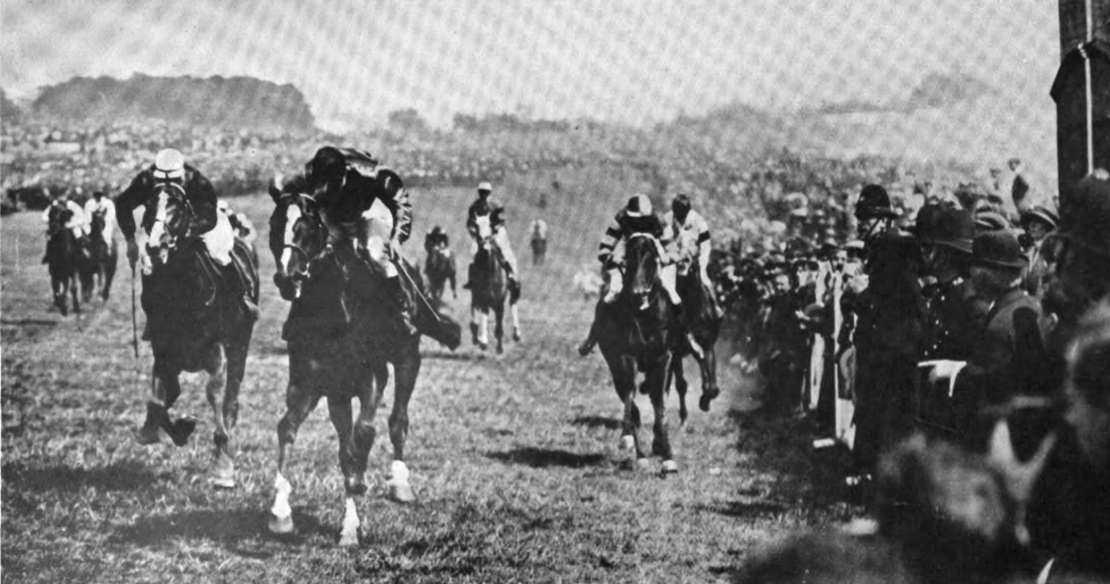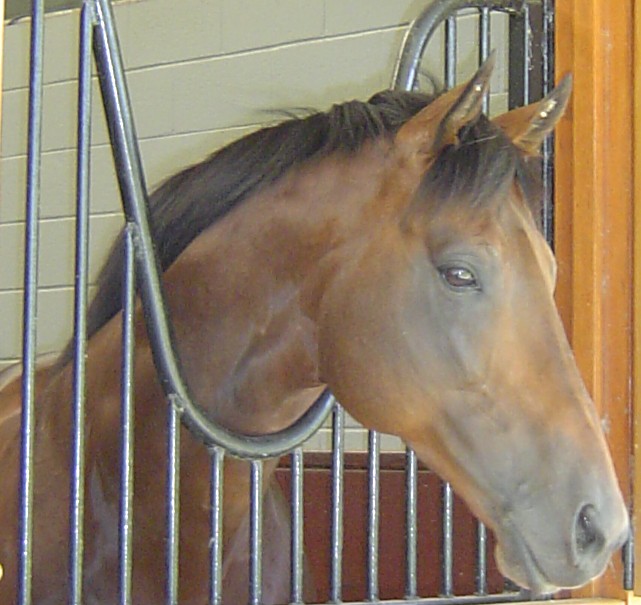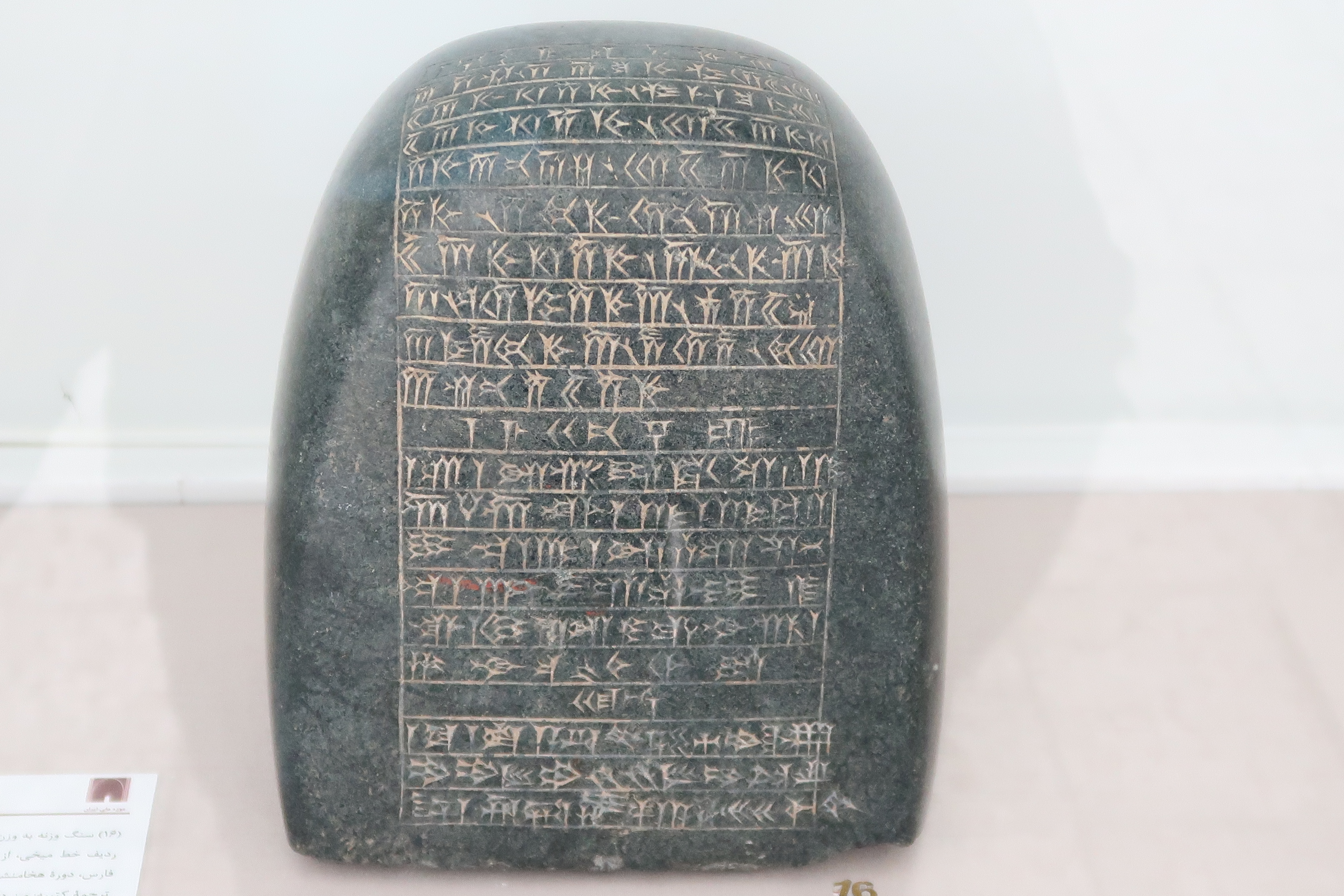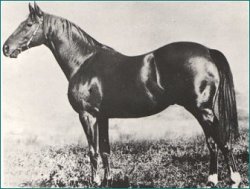|
Rainbird (horse)
Rainbird was an Australian Thoroughbred horse, racehorse who won the 1945 Melbourne Cup. Ridden by Billy Cook (jockey), Billy Cook she carried just 7 Stone (unit), st 7 Pound (mass), lb (48 Kilogram, kg) to victory in the Cup, winning by a margin of lengths. Namesake Australian rail operator CFCL Australia named locomotive UGL Rail C44aci, CF4407 after the horse.CFCLA Fleet Update ''Motive Power'' issue 88 July 2013 page 6 References Melbourne Cup winners 1941 racehorse births Thoroughbred family C7 Racehorses bred in Australia Racehorses trained in Australia {{racehorse-stub ... [...More Info...] [...Related Items...] OR: [Wikipedia] [Google] [Baidu] |
Spion Kop (horse)
Spion Kop (1917–1941) was an Irish-bred, British-trained Thoroughbred racehorse and sire (horse), sire. In a career that lasted from 1919 until 1921, Spion Kop ran fourteen times winning two races. After an undistinguished early career in which he lost his first six races, he improved as a three-year-old to win Epsom Derby, The Derby in record time in 1920. After his retirement from racing he had some success as a stallion. Background Spion Kop, a "strong, handsome" bay horse with a white blaze (horse marking), blaze and four white sock (horse marking), socks, was bred by his owner Major Giles Loder who had inherited the Eyrefield Stud near Caragh in County Kildare from his uncle Eustace "Lucky" Loder in 1914. He was named after the Battle of Spion Kop (1900). Spion Kop's sire Spearmint (horse), Spearmint had been Eustace Loder's most successful horse winning the Derby and the Grand Prix de Paris in 1906. At stud, he was fairly successful, siring Royal Lancer (St. Leger ... [...More Info...] [...Related Items...] OR: [Wikipedia] [Google] [Baidu] |
Pound (mass)
The pound or pound-mass is a unit of mass used in both the British imperial and United States customary systems of measurement. Various definitions have been used; the most common today is the international avoirdupois pound, which is legally defined as exactly , and which is divided into 16 avoirdupois ounces. The international standard symbol for the avoirdupois pound is lb; an alternative symbol (when there might otherwise be a risk of confusion with the pound-force) is lbm (for most pound definitions), # ( chiefly in the U.S.), and or ̶ (specifically for the apothecaries' pound). The unit is descended from the Roman (hence the symbol ''lb'', descended from the scribal abbreviation, '). The English word ''pound'' comes from the Roman ('the weight measured in '), and is cognate with, among others, German , Dutch , and Swedish . These units are now designated as historical and are no longer in common usage, being replaced by the metric system. Usage of the un ... [...More Info...] [...Related Items...] OR: [Wikipedia] [Google] [Baidu] |
Thoroughbred Family C7
The Thoroughbred is a horse breed developed for horse racing. Although the word ''thoroughbred'' is sometimes used to refer to any breed of purebred horse, it technically refers only to the Thoroughbred breed. Thoroughbreds are considered " hot-blooded" horses that are known for their agility, speed, and spirit. The Thoroughbred, as it is known today, was developed in 17th- and 18th-century England, when native mares were crossbred with imported stallions of Arabian, Barb, and Turkoman breeding. All modern Thoroughbreds can trace their pedigrees to three stallions originally imported into England in the 17th and 18th centuries, and to a larger number of foundation mares of mostly English breeding. During the 18th and 19th centuries, the Thoroughbred breed spread throughout the world; they were imported into North America starting in 1730 and into Australia, Europe, Japan and South America during the 19th century. Millions of Thoroughbreds exist today, and around 100,000&n ... [...More Info...] [...Related Items...] OR: [Wikipedia] [Google] [Baidu] |
1941 Racehorse Births
The Correlates of War project estimates this to be the deadliest year in human history in terms of conflict deaths, placing the death toll at 3.49 million. However, the Uppsala Conflict Data Program estimates that the subsequent year, 1942, was the deadliest such year. Death toll estimates for both 1941 and 1942 range from 2.28 to 7.71 million each. Events Below, the events of World War II have the "WWII" prefix. January * January–August – 10,072 men, women and children with mental and physical disabilities are asphyxiated with carbon monoxide in a gas chamber, at Hadamar Euthanasia Centre in Germany, in the first phase of mass killings under the Aktion T4 program here. * January 1 – Thailand's Prime Minister Plaek Phibunsongkhram decrees January 1 as the official start of the Thai solar calendar new year (thus the previous year that began April 1 had only 9 months). * January 3 – A decree (''Normalschrifterlass'') promulgated in Germany by Martin Bormann ... [...More Info...] [...Related Items...] OR: [Wikipedia] [Google] [Baidu] |
Melbourne Cup Winners
Melbourne ( , ; Boonwurrung/ or ) is the capital and most populous city of the Australian state of Victoria, and the second most-populous city in Australia, after Sydney. The city's name generally refers to a metropolitan area also known as Greater Melbourne, comprising an urban agglomeration of 31 local government areas. The name is also used to specifically refer to the local government area named City of Melbourne, whose area is centred on the Melbourne central business district and some immediate surrounds. The metropolis occupies much of the northern and eastern coastlines of Port Phillip Bay and spreads into the Mornington Peninsula, part of West Gippsland, as well as the hinterlands towards the Yarra Valley, the Dandenong Ranges, and the Macedon Ranges. As of 2023, the population of the metropolitan area was 5.2 million, or 19% of the population of Australia; inhabitants are referred to as "Melburnians". The area of Melbourne has been home to Aboriginal Vic ... [...More Info...] [...Related Items...] OR: [Wikipedia] [Google] [Baidu] |
Motive Power
''Motive Power'' is a bi-monthly railway related magazine that focuses on diesel locomotives in Australia. The first issue was published on 23 August 1998. Its headquarters is in Sydney. The content includes photographs of locomotives & trains, news about newly delivered and repainted locomotives, technical articles, and fleet listings of the various Australian railway operators. Articles about railway photography itself are sometimes included, as well as articles and advertisements about railway modelling. Parameters * Size : A4 * Issue : Number 111 is May/Jun 2017 * Issue : Number 143 is Jan/Feb 2023 Year 2022 Pictorial issue (84 pages) * Issue : Number 154 is Jul/Aug 2024 Price $14.50 * Coverage : Australia & some modelling * ISSN : 1442-7079 * Publisher : Motive Power Publications Pty. Ltd. See also * List of railroad-related periodicals A list is a set of discrete items of information collected and set forth in some format for utility, entert ... [...More Info...] [...Related Items...] OR: [Wikipedia] [Google] [Baidu] |
UGL Rail C44aci
The UGL Rail C44ACi (also designated as C44aci or C44ACI) is a model of Australian heavy duty diesel electric locomotive designed by UGL Rail and built at the Broadmeadow factory. It is operated by a number of rail freight operators. The design is based on the National Rail NR class but with some modifications and upgraded features. Design The C44ACi (initially designated as C43ACi) was designed by UGL Rail in response to a tender issued by Pacific National, who required a locomotive to match the performance of their existing 90 class units when hauling heavy coal traffic, while still having the ability to work high speed intermodal services, with the change between applications to be simple. The existing UGL Rail Cv40-9i (NR class) locomotive design was used as a base, but with alterations including: *Higher horsepower prime mover *Smaller main alternator *Enlarged radiator size now overhangs the walkway at the number 2 end to cope with the more powerful engine *AC tracti ... [...More Info...] [...Related Items...] OR: [Wikipedia] [Google] [Baidu] |
CFCL Australia
Rail First Asset Management (RailFirst), formerly known as CFCL Australia (CFCLA, Chicago Freight Car Leasing), is an Australian rolling stock leasing company operating in the rail freight market. It leases assets to a number of private rail operators, predominantly on the defined interstate rail network. Though primarily based in New South Wales, RailFirst's assets can be found operating in most Australian states and with all major train operating companies. It has rolling stock on both long-term lease to those companies as well as assets that are available for spot hire. It is owned by DIF Capital Partners and Amber Infrastructure. Rail First has workshops in Islington Adelaide and Goulburn in regional NSW where it maintains its owned rollingstock in house and the rollingstock of third parties. History Rail First Asset Management was originally established in 1998 by the American Chicago Freight Car Leasing Company as ''CFCL Australia''. The company's first contract was f ... [...More Info...] [...Related Items...] OR: [Wikipedia] [Google] [Baidu] |
Kilogram
The kilogram (also spelled kilogramme) is the base unit of mass in the International System of Units (SI), equal to one thousand grams. It has the unit symbol kg. The word "kilogram" is formed from the combination of the metric prefix kilo- (meaning one thousand) and gram; it is colloquially shortened to "kilo" (plural "kilos"). The kilogram is an SI base unit, defined ultimately in terms of three defining constants of the SI, namely a specific transition frequency of the caesium-133 atom, the speed of light, and the Planck constant. A properly equipped metrology laboratory can calibrate a mass measurement instrument such as a Kibble balance as a primary standard for the kilogram mass. The kilogram was originally defined in 1795 during the French Revolution as the mass of one litre of water (originally at 0 °C, later changed to the temperature of its maximum density, approximately 4 °C). The current definition of a kilogram agrees with this original defini ... [...More Info...] [...Related Items...] OR: [Wikipedia] [Google] [Baidu] |
Stone (unit)
The stone or stone weight (abbreviation: st.) is an English units, English and imperial units, British imperial unit of mass equal to 14 avoirdupois Pound (mass), pounds (6.35 kg). The stone continues in customary use in the United Kingdom and Ireland for body weight. Kingdom of England, England and other Germanic languages, Germanic-speaking countries of Northern Europe formerly used various standardised "stones" for trade, with their values ranging from about 5 to 40 Pound (mass)#Historical use, local pounds (2.3 to 18.1 kg) depending on the location and objects weighed. With the advent of metrication, Europe's various "stones" were superseded by or adapted to the kilogram from the mid-19th century onward. Antiquity The name "stone" derives from the historical use of stones for weights, a practice that dates back into antiquity. The Hebrew Law, Biblical law against the carrying of "diverse weights, a large and a small" is more literally translated as "you sh ... [...More Info...] [...Related Items...] OR: [Wikipedia] [Google] [Baidu] |
Heroic (horse)
Heroic (1921–1939) was an Australian Thoroughbred racehorse who won 21 races from 5 furlongs (1,000 metres) to 2 miles (3,200m) and was a leading sire in Australia. Breeding Heroic was sired by Valais (by the 1905 Epsom Derby winner, Cicero), his dam was Chersonese (GB) by Cyglad. This made him inbred twice in the 3rd generation to Cyllene and in the 3rd and 4th generations (4x3) to Illuminata through the half-sisters Gas, dam of Cicero and Chelandry. Heroic was a brother to the useful sire, Thracian and a half-brother to the stakeswinner, Cimbrian. Heroic was an outstanding type of yearling that fetched the top price of 1,800 guineas at the Inglis’ bloodstock sales. Racing record He was trained by Jack Holt who posthumously would become part of the 2001 inaugural class inducted in the Australian Racing Hall of Fame. At two years: 1923-1924 Heroic’s stakes wins were: *1923 AJC Breeders Plate 5 furlongs *1923 VRC Maribyrnong Plate 5 furlongs *1924 AJC Champagne ... [...More Info...] [...Related Items...] OR: [Wikipedia] [Google] [Baidu] |
Billy Cook (jockey)
William Henry Cook (12 January 191029 January 1985) was an Australian jockey. Career Billy earned the nickname "Last-Race Cookie" following his riding of the winner in the last race 13 Saturdays in succession in Sydney. He was also known as "The Champ", due to his exquisite riding skills. He won six Sydney jockeys' premierships during a distinguished career riding in Australia and overseas. Some of the achievements during his career included winning the 1941 and 1945 Melbourne Cups (Skipton and Rainbird), the 1930 Caulfield Cup ( Amounis), the 1953 Sydney Cup (Carioca), and the 1954 CB Fisher Plate ( Rising Fast). Perhaps his most famous victory was defeating Phar Lap on Mollison in the 1929 Chelmsford Stakes. Retirement He officially retired from riding in 1959. His son Peter Peter may refer to: People * List of people named Peter, a list of people and fictional characters with the given name * Peter (given name) ** Saint Peter (died 60s), apostle of Jesus, leader of ... [...More Info...] [...Related Items...] OR: [Wikipedia] [Google] [Baidu] |








